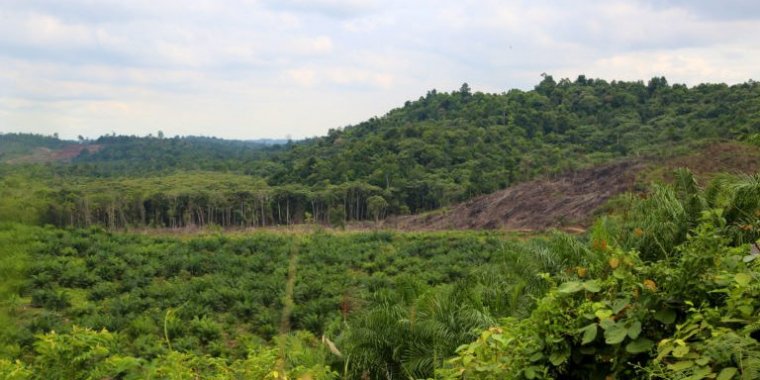| News / Science News |
Disturb forests, trigger new pandemics
The emergence of COVID-19 and other diseases of animal origin such as Ebola, SARS and HIV indicates that disturbing forests can trigger pandemics, say the authors of a new study, highlighting megatrends shaping the future of forests.

Land cleared in East Kalimantan in Indonesia for an oil palm plantation. Image credit: Mokhamad Edliadi/CIFOR
While the exact origins of COVID-19 are yet to be determined, the virus has demonstrated the devastating social and economic significance of pandemics, and also highlighted a “crucial aspect of the linkages between human–forest relations and global change”, says the study.
FAO’s State of the World’s Forests Report 2020 says that the majority of new infectious diseases are zoonotic and their emergence may be linked to changes in forest areas, as well as the expansion of human populations into forest areas.
According to the study, the unprecedented exodus of forest communities to urban areas is shaping the future of forests.
As examples, the study cites how international migration is helping reforestation in Nepal, changing community forest management institutions in Mexico and driving shifts from subsistence to commodity crop monocultures in the Philippines.
A megatrend affecting forests is the growth in numbers of the middle class in low- and middle-income countries, which by 2030 may reach five billion people. This large population, around half of the projected global populace, will spur local and global consumption and increase pressure on land and other resources.
Growing consumption and demand has already seen large-scale, corporate-led land acquisitions for industrial production of cattle, soy and palm oil in South-East Asia, Latin America and Africa. According to the study, during 2001—2015, 27 per cent of forest disturbance was attributed to commodity-driven deforestation.
While the growth in availability of digital technologies, including land mapping tools and real-time satellite data can benefit a wide range of stakeholders, including Indigenous Peoples interested in protecting their forests and livelihoods, the new technologies can also aid those involved in illicit activities.
“Halting and reversing forest loss is increasingly recognised as a means to mitigate the effects of climate change and address biodiversity collapses,” Johan Oldekop, associate professor at the University of Manchester and a lead author of the study, tells. “We need to understand future challenges and opportunities for forests and everyone who depends on them.”
Infrastructure growth to accommodate increased demand for energy, natural resources and transport is putting pressures on forests. By 2050, says the study, there will be at least 25 million kilometres of new roads to facilitate global commodity flows.
Governments in the Amazon basin alone are developing 246 new hydroelectric dams while illegal mining activities, mostly located in forested areas, are expanding rapidly.
Megatrends identified in the study are “exceptionally large in geographical extent and magnitude, and are difficult to reverse”, Laura Vang Rasmussen, assistant professor at the University of Copenhagen, and co-author of the report, tells. “They, thus, require cross-national responses and better monitoring and evaluation programmes to understand local effects.”
“The authors correctly point out that data limitations are an issue, especially socio-economic and demographic data,” notes Douglas Muchoney, head of FAO’s Geospatial Unit.
“An issue is spatially-disaggregating statistical data from national to sub-national scales,” Muchoney tells. Another, he says, is “lack of reference to significant detrimental impacts of invasive species on forest health, structure and function”.
Oldekop suggests that to maximise the positive benefits of megatrends identified in the study and minimise their negative effects, it would help to provide rights to land and resources to local communities and help sustain and improve livelihoods and conserve forests. (SciDev.Net)
YOU MAY ALSO LIKE





